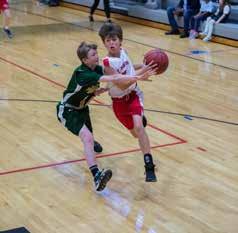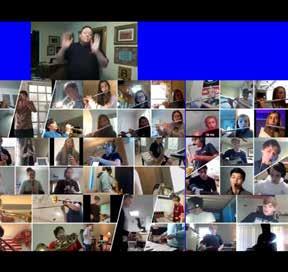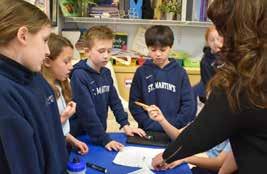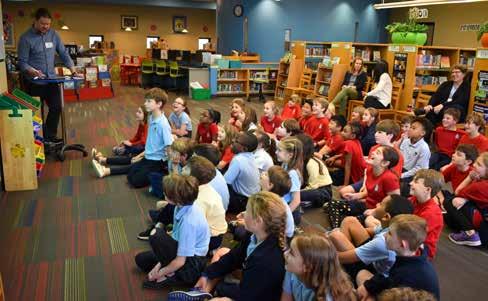Great!
Wow!
Fun!
The Third Grade Journey to Independence b y LYNDS E Y B E R N G A R D, M E G A N DY E A N D M E L A N I E H U R L EY S ME S TH I R D G R A DE TE AC H E R S
“IT IS NOT WHAT YOU DO FOR YOUR CHILDREN, BUT WHAT YOU HAVE TAUGHT THEM TO DO FOR THEMSELVES, THAT WILL MAKE THEM SUCCESSFUL HUMAN BEINGS.” EPPIE LEDERER (ANN LANDERS)
C
hildhood is a series of important t ra n sit ion s . W it hout t hem, children would never learn to walk, talk or make their first friend. These leaps from one stage to the next, while often challenging and intimidating, are exciting opportunities along each child’s journey of growing up. At St. Martin’s, 3rd grade is the bridge between the lower and upper Elementary School years and naturally serves as a year of transition, change and growth for students. In the 1st and 2nd grades, the deadlines for homework assignments never overlap and students do not receive formal grades. However, when students transition to the 4th and 5th grades, they receive homework and grades from multiple teachers and move between classrooms for each subject. This requires 3rd graders to learn to manage their time, balance their workload and become familiar with a grading system before they graduate to 4th grade and beyond. This shift requires dedication and effort on each student’s part, but there is also extensive scaffolding and support in place to ensure their success. Students are not expected to make these transitions overnight. The 3rd grade faculty team breaks down each skill into manageable, achievable steps and gradually guides students to a place of more independence over the course of the year. More Responsibility: Planning, Organization & Grades For the first time in their academic careers, 3rdgrade students are required to use a binder and planner to organize their materials and manage their time. They use these tools to organize notes,
32 SUMMER 2020 | ST. MARTIN’S EPISCOPAL SCHOOL
classwork, study materials and homework for all subjects. While there is a big learning curve for students, they are ready for this level of organization and structure in their school day. The 3rd grade teachers assist students by labeling folders and instructing them on exactly where to place the material for each subject. By the end of the year, 3rd graders have found their rhythm and are organizing their binders successfully on their own. To help students develop their time-management skills, teachers begin by asking learners to record the day’s homework assignments in their planner. Then, students are asked to plan out a week and then a month at a time, making note of all their upcoming due dates and tests. At the same time, teachers transition from reviewing each student’s planner daily, to students monitoring one another’s entries and ultimately maintaining their own planner independently. As they begin to map out their weeks ahead of time, students get in the routine of knowing which days they have extracurricular activities and which days they will have time to study for tests and complete assignments. Students quickly learn the importance







